It is the school holidays, and right on schedule, we completed our woodfired hot tub and excitedly put it to the test. We filled a 1000litre tank with frigid cold creekwater, pumped this creek water into the tub, lit a fire in our DIY barrel stove, and waited.
Actually, the fire lighting was slightly delayed by the discovery of a leak coming from one of the many pipes under the hot tub. We had stopped up the pipes, but obviously not quite well enough. However, 45 minutes and a tube of silicone later, we were back in business. We filled the tub to the brim, lit the fire, and waited.
And waited.
And waited.
Simply put, our hot tub was a failure.
Half a year’s worth of firewood and 24 hours later, we had managed to get the hot tub’s 800 litres of water from stop-your-heart iciness to ‘mum-we’ve-run-out-of-hot-water’ lukewarm-ness. Even our younger teenage son, the one who will jump into our creek in wintertime on a dare, didn’t brave the tepid waters of the hot tub; after being all prepared for Japanese onsen steaminess, it was too disheartening.
Here is what we have done so far:
- We purchased a secondhand Jacuzzi with a broken pump and stopped up all the pipes which would normally be connected to pumps and filters.
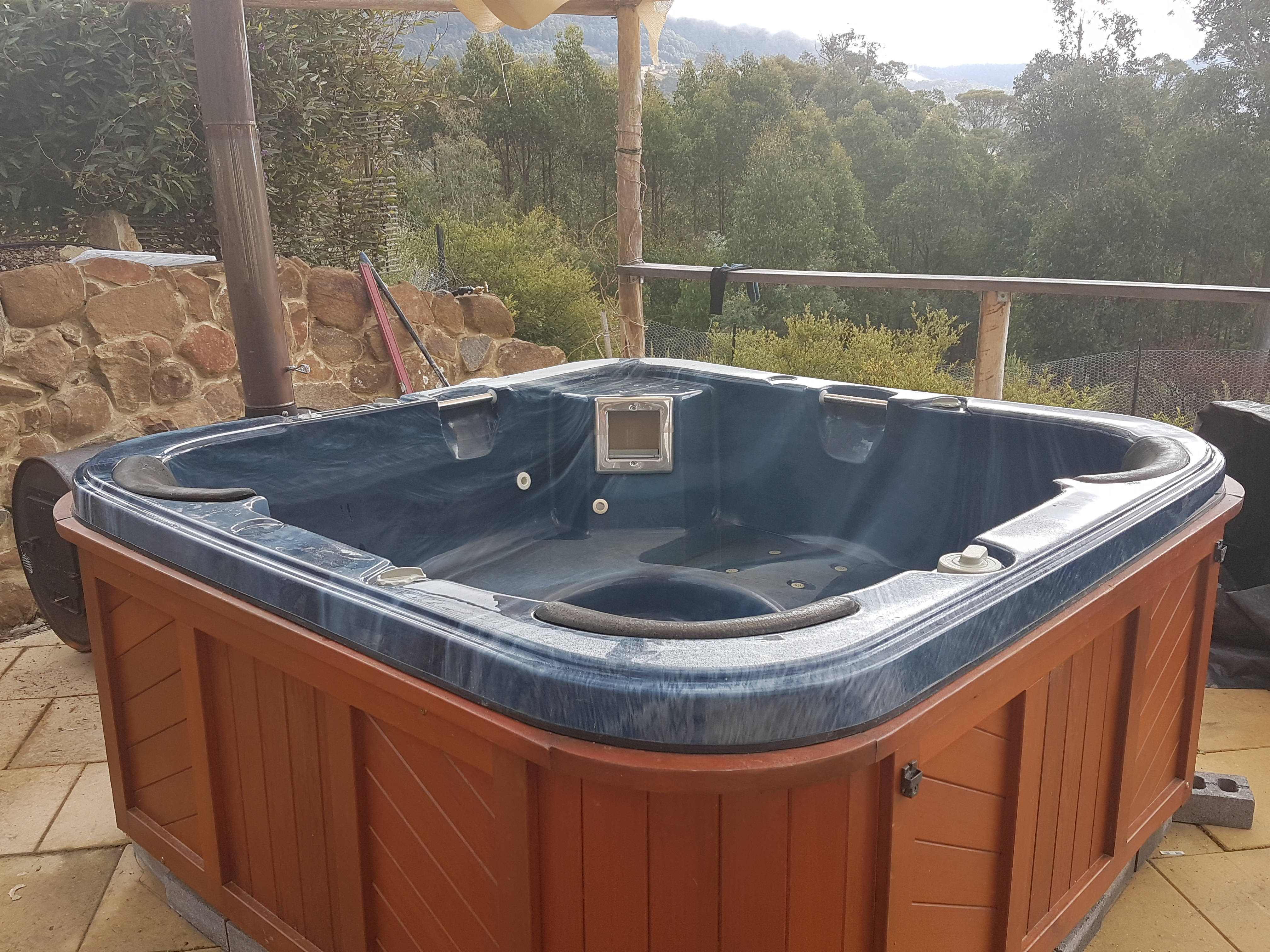
- We converted a 44 gallon drum into a barrel stove as our hot tub heat source.
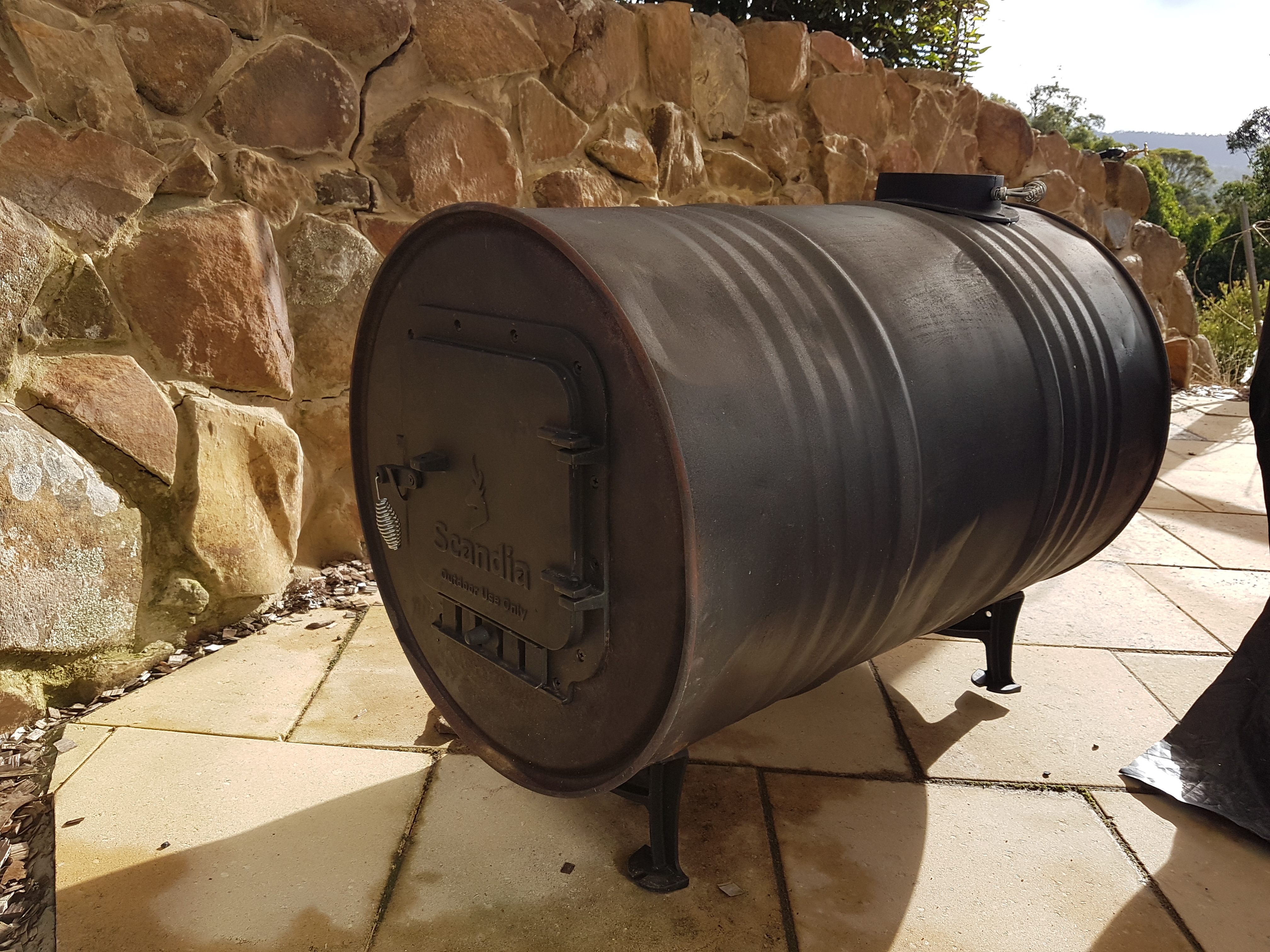
- We had a ‘hot water jacket’ heat exchanger made by the local metalworker and placed this inside the barrel stove at the back. We connected the water jacket to the hot tub via two 1” high-heat flexible hoses.
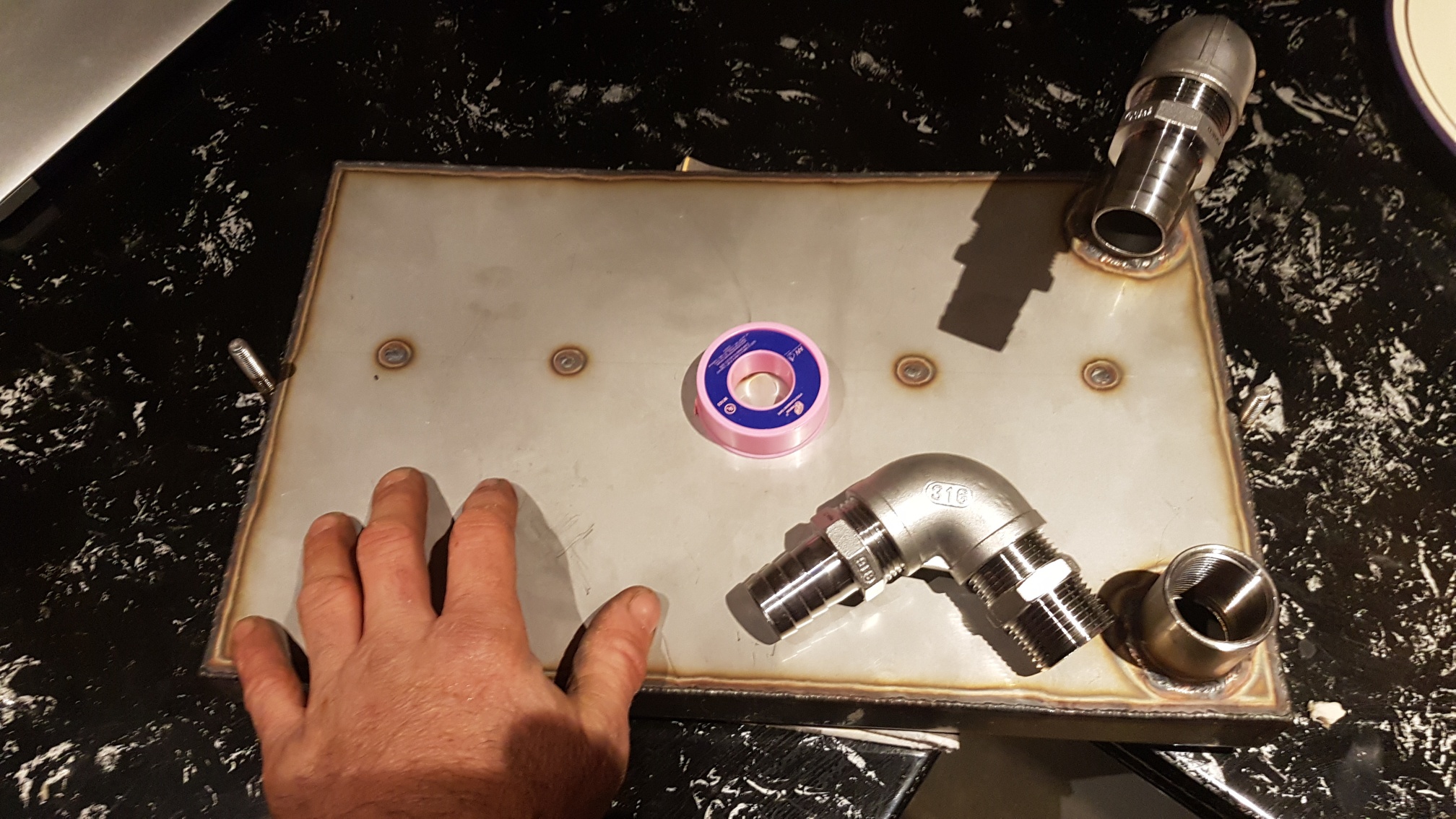
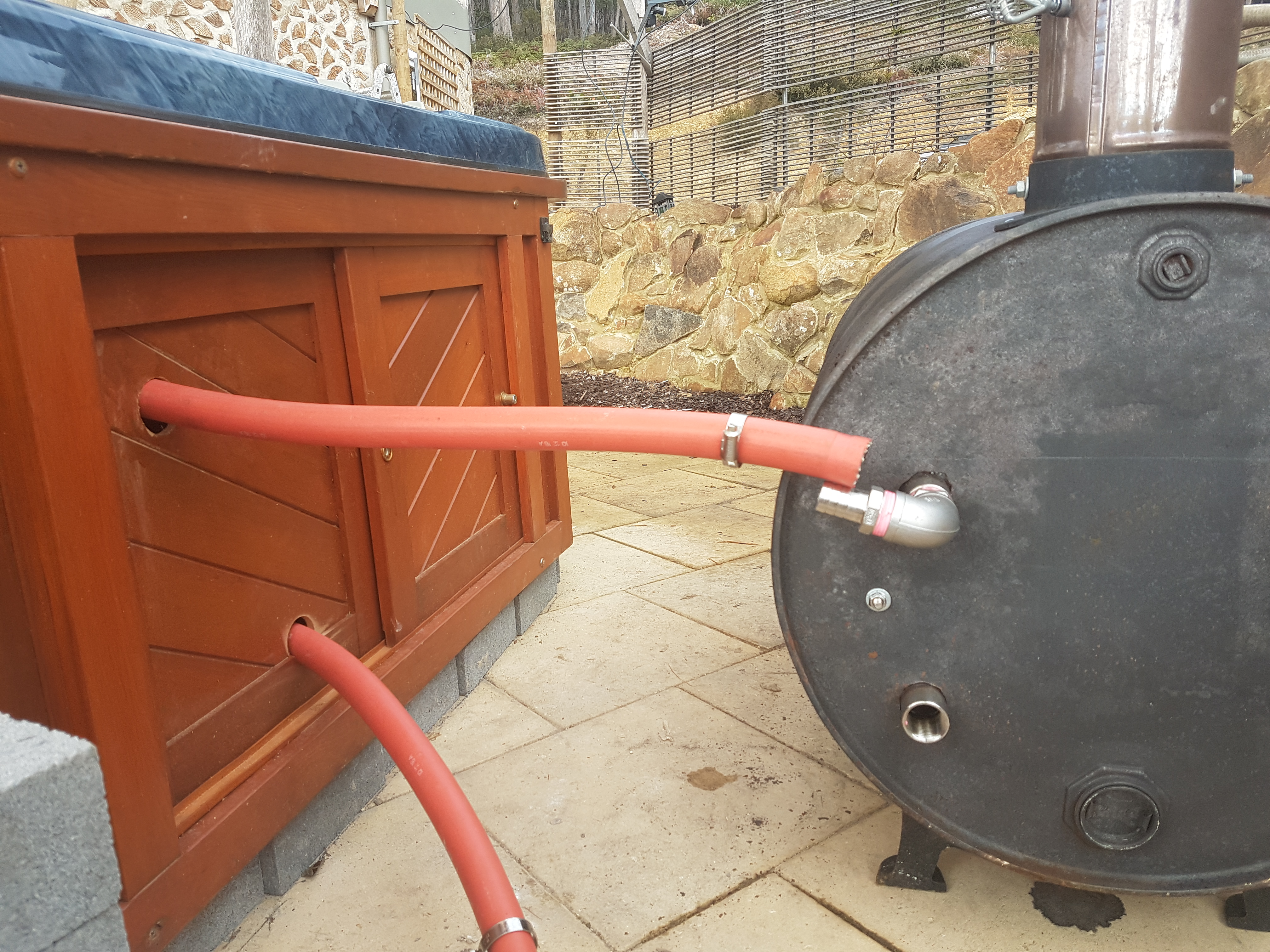
Let’s focus on the positives:
- The hot tub holds water. There are (now) no leaks.
- The barrel stove gets really hot. We filled it with firebricks along the base and halfway up the walls to improve its efficiency, and it gets HOT.
- There is a thermosiphon action occurring. The top hose from the water jacket got hot, and the bottom hose went from freezing cold to lukewarm as the water in the tub heated up. We could feel the hot water coming into the tub when we put our hand right over the inlet. So, yes, we achieved a thermosiphon effect.
But obviously, the whole heating process was just taking way too long. The hot water flow from the tub inlet felt so slow and weak.
I abandoned the hot tub, stomped off to work on the sauna walls, and considered likely problems with our hot tub set-up.
- I wondered if we were trying to heat too large a body of water, but other woodfired hot tubs sold commercially look a similar size.
- It couldn’t be the heat source. Our barrel stove works really well and gets really hot.
It had to be something to do with the heat exchanger or the setup connecting the hot tub to the water jacket. Here were some of my ideas:
- The heat exchanger is the problem: as the water comes into a larger volume container, the flow slows down and possibly swirls different directions before exiting the hot water pipe. Other DIY woodfired tubs utilise copper pipe coils rather than water jackets. (Not sure why the jackets wouldn’t work, though. We have them in our woodfired ovens to heat water).
- The pipes are too far from the tub, creating too much drag. But other woodfired hot tubs pipes seemed a similar length.
- Other tubs use metal pipe rather than flexible hoses to join the heat exchanger to the tub. Maybe there is too much drag in the hoses?
- The rise of the hot water pipe from water jacket to tub is too gentle, only producing a weak, mild thermosiphon effect. I had read online of someone needing a near-vertical standpipe to achieve a good thermosiphon effect. But none of the hot tubs we googled had a degree of rise much different to ours.
We picked the brains of a Very Intelligent Friend. He had a few suggestions.
- Our heat exchanger was not in the hottest part of the fire! Being directly under the flue, much of the heat from the fire was wafting up the flue past our heat exchanger. We needed to move the heat exchanger to a different position.
- He suggested that we change our heat exchanger to a M-shaped pipe instead of a water jacket. I’m not sure why this would be, but my theory is still to minimise disruption to the flow.
- He felt very strongly that we needed to raise the hot tub completely above the level of the heat exchanger to get a strong thermosiphon effect.
So, we have decided to put all of his suggestions into effect. We will make a new heat exchanger using copper pipe and place it in the hottest part of the fire. And we plan to raise the hot tub onto pallets so that it is above the heat exchanger. Of course, we will now need a ladder to get into the tub. Or maybe we could place a mini-tramp next to the tub and cannonball into it.
To be continued.

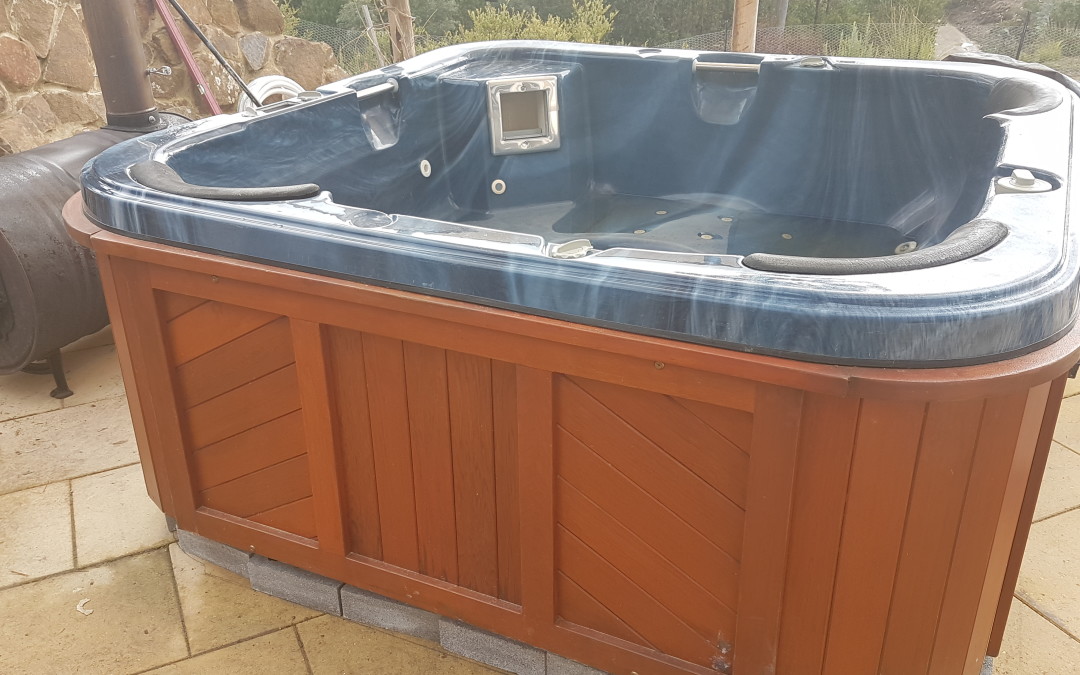
Did you consider heating the tub using solar heatpipes?
Didn’t consider that because I have no idea how to do that as a DIY project. Plus wintertime here is generally pretty rainy, and we’re more likely to use the hot tub in winter. But now I’m thinking we should build another one and try solar heatpipes…have you got any good resources/links to point me in the direction of?
Thank you for sharing your adventure project. – humour is much appreciated also ??
Thanks, Agata. In reality, the humour only comes into it AFTER all the fails are in the distant past. 😉
Hi, try a check valve (aka: non return valve, one way valve) going into the bottom (cold in )port of your heat exchanger. Orient the arrow on the body of the valve toward the exchanger. When the body of water heats enough for thermosyphon to occur, hot water moves up and out. Energy (heat) is lost if it fluffs about back and forth in the cold in pipe. When in operation and working correctly, you can hold onto this valve and it will be cool despite the fire raging! That is until all of the water is hot. We’ve also found that an insulating floating blanket on the top of the tub helps a lot too.
I totally argee that you be missing out on some heat with that heat exchanger in that position. We’ve had success with a water jacket( 100mm tube inside 150mm tube) 600mm long in the first part of the flue and insulating it. A cool alternative to changing fire and tub levels is to use a ( Cross symbol + hissing bat noises) small DC recirculating pump. eg: 2w 5-w Topsflo pump.They can run on a 15w solar panel only.(no battery) We’re about to trial a small rocket stove enclosed in a water tank as a heat exchanger.
Ha ha, cross and hissing sounds!!!! We’d probably have incorporated a pump if we’d had any idea how to do it. 😀 Sorry to have missed this comment, for some reason I stopped receiving notifications. Keen to hear if your rocket shower works. Slightly tempted to make one, too, but I think we are reaching the limit of our fire-driven projects at our place. Someone has to keep up with all the firewood!